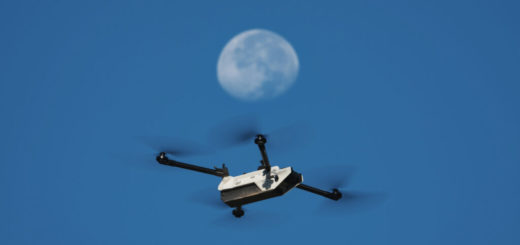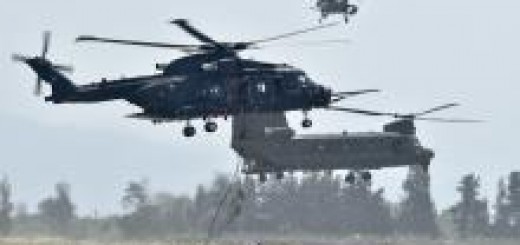France Seeks Rafale Fighter Jet Fleet Reinforcement With 61 More in New 2026 Budget Draft
{loadposition bannertop}
{loadposition sidebarpub}
France’s 2026 defense finance bill outlines a goal of 286 Rafale fighters, including a potential 61 new jets for the Air and Space Force and Navy. The plan underscores Paris’s intent to sustain its airpower edge, though the proposal still faces political hurdles before approval.
According to official French budget documents and reported by La Tribune, on October 21, 2025, the Ministry of the Armed Forces set a new top-end target of 286 Rafale fighters and signaled a prospective order of 61 additional aircraft for the Air and Space Force and the French Navy. The draft also foresees two replacement jets in 2026 after an August 2024 midair loss, and more than 1.5 billion euros in 2026 payments tied to Rafale F4 and F5 deliverables. This remains a proposal in the 2026 finance bill, not a parliamentary vote, and therefore not a contract. If the government falls or the bill stalls, the order may not materialize.Follow Army Recognition on Google News at this link
The Dassault Rafale is a twin-engine, multi-role fighter capable of air superiority, deep strike, reconnaissance, and nuclear deterrence missions, equipped with AESA radar, SPECTRA electronic warfare suite, and a full range of precision-guided munitions (Picture source: Dassault Aviation).
France’s twin-engine Rafale is an omni-role platform built around the Thales RBE2 AESA radar, the SPECTRA electronic warfare suite, and the Front Sector Optronics system, tied together by a modular avionics core that fuses sensor data for the pilot. Powered by two Safran M88 turbofans, the aircraft carries up to 9.5 tons on 14 stations and can swing from air policing to deep strike in a single sortie. Armament cleared includes Meteor beyond-visual-range missiles, MICA and MICA NG for close- and medium-range air combat, SCALP for deep strike, and the AASM Hammer guided weapon family. Naval Rafale M variants bring reinforced gear and carrier compatibility for Charles de Gaulle and its successor.
The Rafale’s story stretches back to the late Cold War, with a series of aircraft entering French Air Force service in 1998 and the Navy in 1999, followed by iterative blocks from F1 to F3-R. The F4 baseline, qualified by the DGA in 2023, adds connectivity, sensor fusion and electronic-warfare enhancements now rolling across the fleet. Paris has already launched the F5 roadmap, which couples Rafale with a stealthy UCAV “remote carrier,” restores a full-spectrum suppression of enemy air defenses mission set, and prepares carriage of the next-generation ASN4G nuclear missile for the airborne leg of deterrence.
Rafale’s value lies in its ability to fight for air superiority while striking hardened targets and surviving inside contested airspace. In air combat, RBE2 AESA and data-links support long-range Meteor shots while SPECTRA’s threat detection, jamming and countermeasures shrink adversary engagement windows. For strike, AASM Hammer and SCALP provide standoff options from precision CAS to deep interdiction, with F5 set to introduce a dedicated anti-radiation and SEAD/DEAD kill chain through new munitions and collaborative tactics with loyal-wingman drones. At sea, Rafale M extends that portfolio to anti-ship and fleet air defense roles from a French carrier deck.
The possible 61-jet tranche serves three aims. First, it rebuilds mass as France draws down older fleets and sustains readiness while export deliveries continue. Second, it underwrites the F5 transition and nuclear recapitalization, with Luxeuil-Saint-Sauveur reconfigured as a fourth nuclear air base hosting future Rafale squadrons. Third, it hedges against delays in the Franco-German-Spanish Future Combat Air System by anchoring industrial capacity at Dassault and its suppliers for another decade. The finance bill is only entering debate at the Assemblée Nationale, and France’s recent cabinet turbulence is a reminder that a failed budget or a collapse of the government could delay or reframe the plan altogether. For now, the 286-aircraft target and the 61-jet buy remain a signal, not a signature.

{loadposition bannertop}
{loadposition sidebarpub}
France’s 2026 defense finance bill outlines a goal of 286 Rafale fighters, including a potential 61 new jets for the Air and Space Force and Navy. The plan underscores Paris’s intent to sustain its airpower edge, though the proposal still faces political hurdles before approval.
According to official French budget documents and reported by La Tribune, on October 21, 2025, the Ministry of the Armed Forces set a new top-end target of 286 Rafale fighters and signaled a prospective order of 61 additional aircraft for the Air and Space Force and the French Navy. The draft also foresees two replacement jets in 2026 after an August 2024 midair loss, and more than 1.5 billion euros in 2026 payments tied to Rafale F4 and F5 deliverables. This remains a proposal in the 2026 finance bill, not a parliamentary vote, and therefore not a contract. If the government falls or the bill stalls, the order may not materialize.
Follow Army Recognition on Google News at this link
The Dassault Rafale is a twin-engine, multi-role fighter capable of air superiority, deep strike, reconnaissance, and nuclear deterrence missions, equipped with AESA radar, SPECTRA electronic warfare suite, and a full range of precision-guided munitions (Picture source: Dassault Aviation).
France’s twin-engine Rafale is an omni-role platform built around the Thales RBE2 AESA radar, the SPECTRA electronic warfare suite, and the Front Sector Optronics system, tied together by a modular avionics core that fuses sensor data for the pilot. Powered by two Safran M88 turbofans, the aircraft carries up to 9.5 tons on 14 stations and can swing from air policing to deep strike in a single sortie. Armament cleared includes Meteor beyond-visual-range missiles, MICA and MICA NG for close- and medium-range air combat, SCALP for deep strike, and the AASM Hammer guided weapon family. Naval Rafale M variants bring reinforced gear and carrier compatibility for Charles de Gaulle and its successor.
The Rafale’s story stretches back to the late Cold War, with a series of aircraft entering French Air Force service in 1998 and the Navy in 1999, followed by iterative blocks from F1 to F3-R. The F4 baseline, qualified by the DGA in 2023, adds connectivity, sensor fusion and electronic-warfare enhancements now rolling across the fleet. Paris has already launched the F5 roadmap, which couples Rafale with a stealthy UCAV “remote carrier,” restores a full-spectrum suppression of enemy air defenses mission set, and prepares carriage of the next-generation ASN4G nuclear missile for the airborne leg of deterrence.
Rafale’s value lies in its ability to fight for air superiority while striking hardened targets and surviving inside contested airspace. In air combat, RBE2 AESA and data-links support long-range Meteor shots while SPECTRA’s threat detection, jamming and countermeasures shrink adversary engagement windows. For strike, AASM Hammer and SCALP provide standoff options from precision CAS to deep interdiction, with F5 set to introduce a dedicated anti-radiation and SEAD/DEAD kill chain through new munitions and collaborative tactics with loyal-wingman drones. At sea, Rafale M extends that portfolio to anti-ship and fleet air defense roles from a French carrier deck.
The possible 61-jet tranche serves three aims. First, it rebuilds mass as France draws down older fleets and sustains readiness while export deliveries continue. Second, it underwrites the F5 transition and nuclear recapitalization, with Luxeuil-Saint-Sauveur reconfigured as a fourth nuclear air base hosting future Rafale squadrons. Third, it hedges against delays in the Franco-German-Spanish Future Combat Air System by anchoring industrial capacity at Dassault and its suppliers for another decade. The finance bill is only entering debate at the Assemblée Nationale, and France’s recent cabinet turbulence is a reminder that a failed budget or a collapse of the government could delay or reframe the plan altogether. For now, the 286-aircraft target and the 61-jet buy remain a signal, not a signature.






